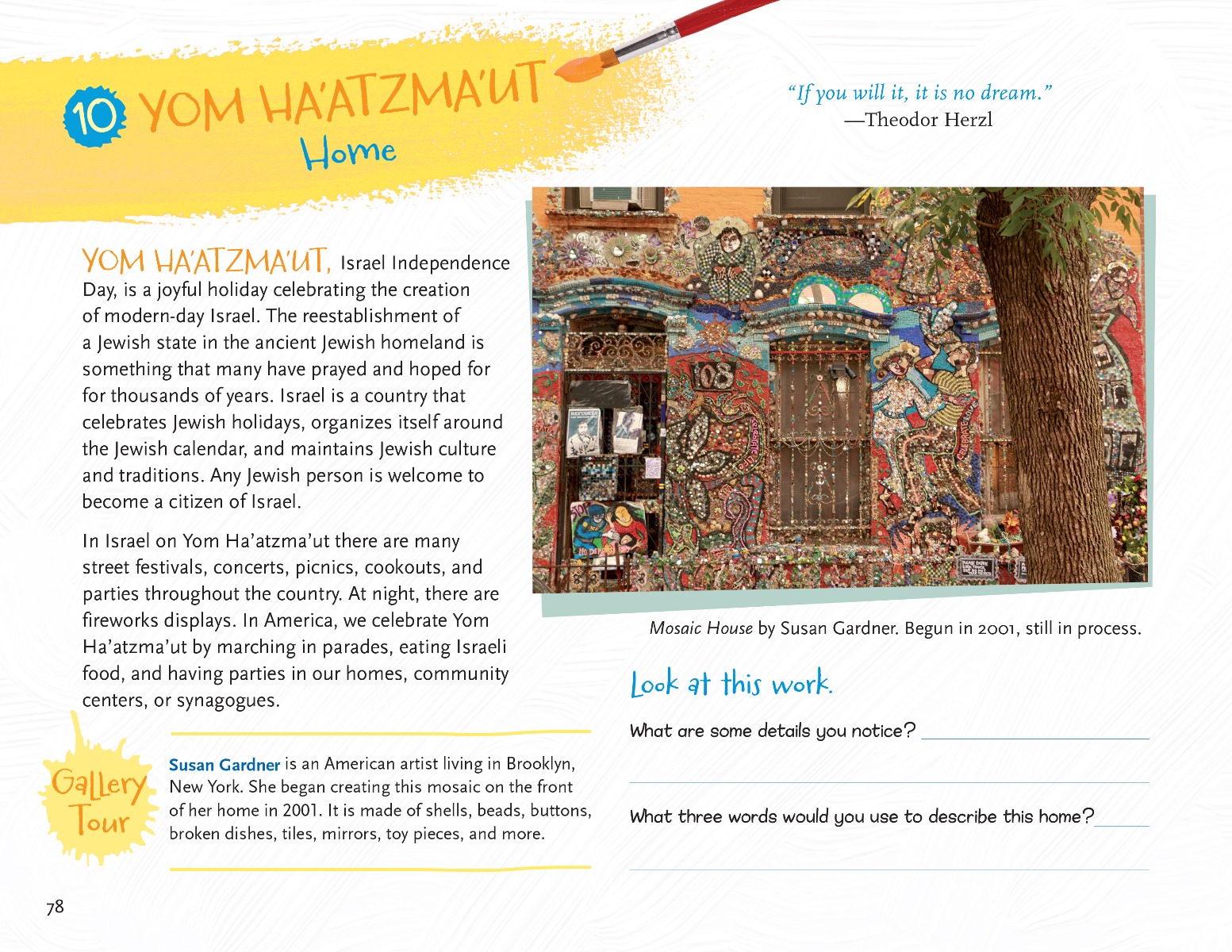Three Lessons for Yom Ha’atzma’ut
Jews around the world will celebrate Israel Independence Day, known as Yom Ha’atzma’ut. Beyond wearing blue and white and making Israeli flags, help students connect with Israel on a deeper level.
Grades K-2
For young children, Yom Ha’atzma’ut offers an opportunity to explore the idea that Israel is the ancient and modern homeland of the Jewish people. Use Let’s Discover Israel to introduce the holiday through the idea of home.
Begin by asking students what they like best about being home, then explain that Israel is also our home. Point to Israel on a world map or globe, and ask how they would get there. To explore the notion of feeling comfortable in a place, help students brainstorm places that feel like a second home. Ask them to think about how it feels to visit the home of a close friend or relative, or favorite vacation spot. Where else do they feel this way? Have students draw their home and a place that feels like a second home.
Ask students who else lives in their home, and who they see at their second home. How do they feel connected to these people? Explain that Israel might feel like a home to anyone who is Jewish, and how we are all connected to the Jews who once lived in Eretz Yisrael and shared holy places there, like the Holy Temple.
Have them draw faces showing how they feel when they are away from home and missed their family, and when they return home. Invite students to show these feelings with their own faces or their bodies.
Grades 3-5
 What makes a house a home? What makes Israel the Jewish homeland?
What makes a house a home? What makes Israel the Jewish homeland?
In Make, Create, Celebrate: Jewish Holidays through Art—coming in April—artist and educator Julie Wohl helps students examine the concept of home through the lens of art. In this lesson, students will express their hopes, dreams, and wishes for their own homes by writing their own versions of the birkat habayit blessing, then connect their ideas of home with the notion of a Jewish homeland.
As a group, look at the Mosaic House by Susan Gardner. Encourage students to think about the images she created on the front of her home by asking them what they see in the image and to describe how the work she’s created tells us about her hopes for her home.
Introduce the blessing of birkat habayit, using the following example:
“May this be a home filled with laughter and love, health, joy, and contentment. May all who enter know joy and all who leave know satisfaction. So may it be God’s will.”
Then ask students to write their own version of a birkat habayit.
This is just the beginning of a lesson that also includes a comparison of Israel’s Independence Day with the Fourth of July, and students’ own mosaic creations to support the idea of bringing together small, distinct pieces to create a larger, unified whole.
All the lessons in Make, Create, Celebrate engage students visually as a way to help students connect with the underlying values of the holidays in a personal way.
Click here to download the complete lesson plan from Make, Create, Celebrate Lesson Plan Manual.
Make, Create, Celebrate will be available beginning April 9. Learn more about it in our new 2018-2019 catalog.
Grades 6+
Israel is layered with history. Jewish history is in the museums, in the streets, and buried underground, waiting to be uncovered by archaeologists. Throughout history, Israel has been home to Jews, as well as many other civilizations. The following lesson from Experience Modern Israel focuses on helping students explain what led to Israel’s formation in 1948.
Before students arrive to class, write on a board, “What does it mean for a place to have ‘layers of history’?” In chevruta, as students to propose possible answers. Discuss how Israel has been controlled by many different civilizations and how the Jews were forced into Diaspora after the Second Temple was destroyed in 70 CE.
Use a map to locate Diaspora communities before 1948. Note that between the years 70 and 1948, neither Jews nor Palestinian Arabs had sovereign control over the Land of Israel. Have students make a timeline of Israel’s history. In small groups or with a partner, have them research one of the timeline entries and present it to the class either orally or in a small poster.
Students can also create an interactive digital timeline, using detailed instructions from www.behrmanhouse.com/EMI. Through rich photos and a blended online environment, Experience Modern Israel immerses students in a direct encounter with everyday Israeli life. On the book’s companion digital resource page, you’ll also find many Israel resources, and a demo for a virtual tour using a customized Google Earth environment that enriches the topics in Experience Modern Israel with video clips, music, photos, art, games, primary source documents, and more.
Don’t forget to subscribe to our newsletter and connect with us on social media!



